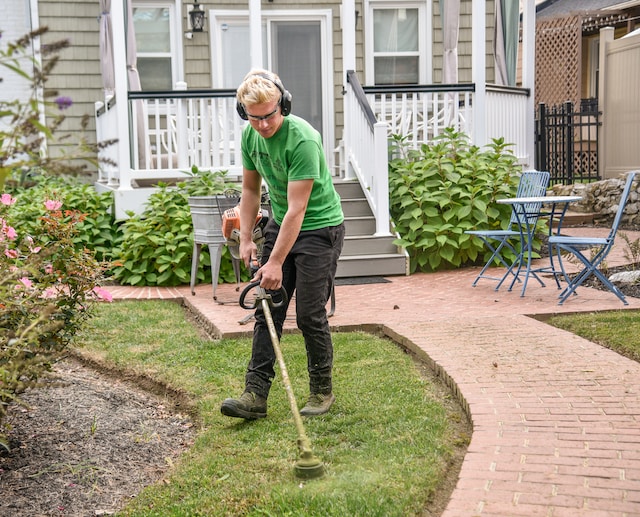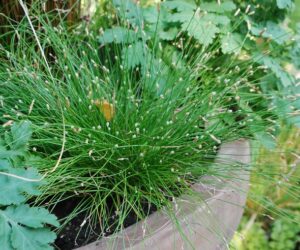
Maintaining a lush and vibrant lawn is the goal of every homeowner, but the journey to achieving that picturesque green carpet can be more challenging than it appears.
In collaboration with, which offers emergency support for any homeowner, you can address these challenges and ensure the longevity of your outdoor and indoor space.
Read on to uncover the hidden struggles of lawn care that often go unnoticed. We’ll also explore the common problems that impact your lawn’s health and provide actionable solutions to help you achieve a healthy lawn.
Understanding Lawn Care Challenges
Despite its seemingly simple nature, lawn care is a complex process that demands attention to detail and a deeper understanding of the ecosystem you’re cultivating.
Some of the often overlooked struggles associated with maintaining a lawn include soil quality, pest management, and adapting to unpredictable weather patterns.
By recognizing and addressing these challenges or taking professional services like Rytech Inc Services, you can embark on a journey towards more effective and rewarding lawn maintenance.
Unveiling the Underground Challenges of Lawn Maintenance
What lies beneath the surface greatly influences the health of your lawn. Factors like compaction, thatch buildup, and root competition can compromise the growth and vitality of grass roots.
Combat these challenges by aerating the soil to improve its structure, dethatching when necessary, and strategically selecting grass varieties that are better adapted to your soil conditions.
Addressing root-related issues will contribute to a more resilient and thriving lawn.
Dealing with Soil Issues
Soil quality is the foundation of a healthy lawn. Poor soil can lead to a range of issues, including stunted growth and susceptibility to diseases.
Common soil problems such as compaction and nutrient deficiencies can hinder grass root development and nutrient uptake.
To tackle nutrient deficiencies, use soil testing to determine nutrient needs. And aside from regular aeration, applying organic compost can also enhance soil structure and fertility, promoting robust grass growth.
If you’re an early riser, you probably have this nagging question in your head: Is it illegal to mow your lawn early in the morning?
Be aware of potential legal restrictions on early morning lawn care in your area. Many communities have noise ordinances that limit noisy activities, including lawn mowing, during early hours.
While it’s essential to maintain your lawn, consider adjusting your schedule or using quieter electric mowers to comply with local regulations and maintain a harmonious neighborhood environment.
Exploring the Ecological Impact of Lawn Fertilizers
Lawn fertilizers contribute to that lush green look, but they can also have unintended ecological consequences. Common fertilizers can leach into water bodies, causing water pollution and harming aquatic life.
To strike a balance between aesthetics and environmental responsibility, explore organic fertilizers that release nutrients slowly and minimize runoff. Additionally, consider leaving some areas of your lawn unfertilized to support biodiversity.
Tackling Subsurface Pest Issues
Unseen pests beneath the surface can wreak havoc on your lawn. Nematodes, grubs, and other subterranean creatures can damage grass roots and compromise the appearance of your lawn.
Regularly inspect your lawn for signs of pest activity, such as brown patches or thinning grass.
Integrated pest management techniques, such as introducing beneficial nematodes or using natural predators, can help control pest populations without resorting to excessive chemical treatments.
Making Sure You’re Growing Green, Not Weeds
Weeds are a common adversary in lawn care, but controlling them doesn’t have to harm your grass. Selective herbicides target specific weed species while sparing your desirable grass.
To minimize weed growth, maintain proper mowing heights and patterns, overseed your lawn to fill in bare spots, and consider hand-pulling weeds when feasible.
Balancing weed control with maintaining a healthy lawn ecosystem ensures that your grass thrives without being overwhelmed by unwanted plants.
Adapting Lawn Care to Unpredictable Rainfall Patterns
Changing weather patterns can make watering your lawn a challenge. Drought conditions followed by heavy rains can stress grass and create an ideal environment for disease.
To adapt, invest in a rain gauge to track actual rainfall and adjust your watering schedule accordingly. You might also consider incorporating drought-resistant grass varieties that require less water to thrive.
Confronting Lawn Care Conundrums in Low-Light Areas
Maintaining a lawn in shaded areas can be particularly tricky. Limited sunlight inhibits grass growth, and bare patches might become a common sight.
Choose shade-tolerant grass varieties and consider alternative ground covers like moss or shade-loving plants. Regular aeration and proper watering techniques can also promote healthier growth in shaded spots.
Conclusion
Lawn care is a journey that requires a holistic understanding of your lawn’s unique challenges.
By addressing hidden struggles such as soil issues, root problems, early morning mowing restrictions, ecological impacts of fertilizers, subsurface pests, weed management, adapting to rainfall patterns, and dealing with shade, you can nurture a resilient and vibrant lawn that enhances your outdoor space.
Remember, a well-maintained lawn not only adds to your home’s curb appeal but also contributes to a healthier environment and a more enjoyable outdoor experience.
FAQs
Q: Can overwatering my lawn be as damaging as underwatering?
Absolutely. Overwatering can lead to shallow root systems, susceptibility to diseases, and nutrient leaching. It’s crucial to find the right balance between providing adequate moisture and avoiding waterlogging.
Q: Are there grass varieties that require less frequent mowing?
Yes, some grass varieties, like fine fescue or buffalo grass, grow more slowly and require less frequent mowing. Choosing a grass type that suits your desired maintenance level can reduce the time you spend behind the lawnmower.
Q: How can I tell if my lawn’s soil is compacted?
You can perform a simple “screwdriver test.” If a screwdriver doesn’t easily penetrate the soil to a depth of around six inches, your soil may be compacted. Lawn aeration can help alleviate this issue.
Q: What’s the best way to deal with pet damage on my lawn?
Pet urine can create brown patches due to nitrogen concentration. Water the area immediately after your pet urinates to dilute the urine. Consider training your pets to use a designated area or consult your veterinarian about modifying their diet to reduce the impact on your lawn.
Q: Can I use homemade remedies for weed control?
Yes, certain homemade remedies like vinegar-based solutions can be effective in controlling weeds. However, it’s essential to use them carefully, as they can also harm desirable plants. Test on a small area before widespread application.
Q: Is it necessary to remove grass clippings after mowing?
No, leaving grass clippings on your lawn can actually benefit it. Clippings can provide a source of natural nutrients and help improve soil structure as they break down.
Q: How can I improve lawn health in areas with heavy foot traffic?
High-traffic areas can become compacted and worn down. Consider installing stepping stones or pathways to redirect foot traffic and reduce stress on the grass. Additionally, choosing grass varieties with good wear tolerance can help these areas thrive.
Q: Can I overseed my lawn in the summer?
While fall is the ideal time for overseeding due to cooler temperatures and consistent moisture, you can also overseed in early summer. Just ensure you provide proper watering and care to help new grass establish before the heat of summer.
Q: Can I use leaves from my yard as a natural mulch?
Yes, using shredded leaves as mulch can help retain moisture, regulate soil temperature, and improve soil structure. It’s a sustainable way to recycle yard waste while benefiting your lawn.



